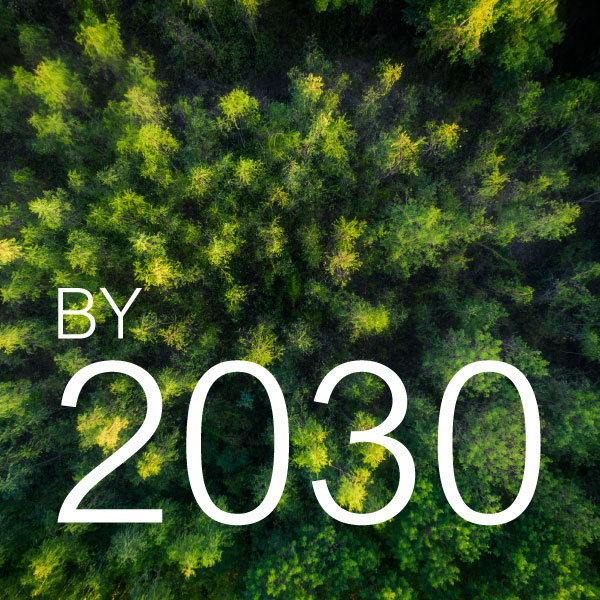We know that we are the solution. We're able to reduce energy consumption, and to be a good partner to all our clients in helping them reduce their own carbon emissions.
We believe that everyone has a role to play in creating a more sustainable future. The rigorous sustainability goals we set for ourselves measure our progress, but we can’t do it alone. That’s why we’ve aligned our sustainable efforts with the United Nations 17 Sustainable Development Goals. In doing so, we now join a global network of organizations and thought leaders, collectively advancing a powerful set of standards to create positive change.
The Sustainable Development Goals are a universal call to action, existing to end poverty, protect the planet, and ensure that all people enjoy peace and prosperity by 2030.
In the coming year, we’ll also continue to join companies and countries all over the world in taking proactive steps toward limiting climate change. We recently shared our commitments to sustainable development at COP23, and collaborated with sustainability leaders at One Planet Summit to limit global warming and its impact. We’re working toward aggressive goals, including carbon neutrality by the year 2030, with measurable reductions in our CO2 emissions along the way. This year brings with it a higher set of sustainability standards for our entire ecosystem of suppliers, vendors, and the broader Schneider Electric community.
A key measurement for progress is the 2018 - 2020 Schneider Sustainability Impact, holding us more accountable than ever. In fact, one-third of our sustainability targets concern health-related topics.
Short- and long-term sustainability goals

By 2020, reach the 21 commitments of the 2018 – 2020 Schneider Sustainability Impact statement, define a precise trajectory respecting the 2 °C scenarios up to 2050, validate it via the Science Based Targets initiative to which the company has been a signatory since 2016, and increase the impact of the Schneider Electric internal carbon price.

By 2030, achieve carbon neutrality by reducing the carbon emissions of the Group's sites as well as those of its industrial ecosystem including its suppliers and customers, quantify the CO2 emissions avoided by its customers thanks to its EcoStruxure offers, aim for 100% renewable energy, 100% recycled or certified packaging, 100% recovered waste, and double its energy productivity compared to 2005.

By 2050, on scopes 1 and 2, reduce by more than 50% its CO2 emissions in absolute value compared to 2015, in line with the guidelines of the Science Based Targets.
1 Scope 1 is also referred to as Direct Green House Gases (GHG) and are defined as emissions from sources that are owned or controlled by the organization. Scope 2 is also referred to as Energy Indirect GHG and are defined as emissions from consumption of purchased sources of energy generated upstream from the organization.
